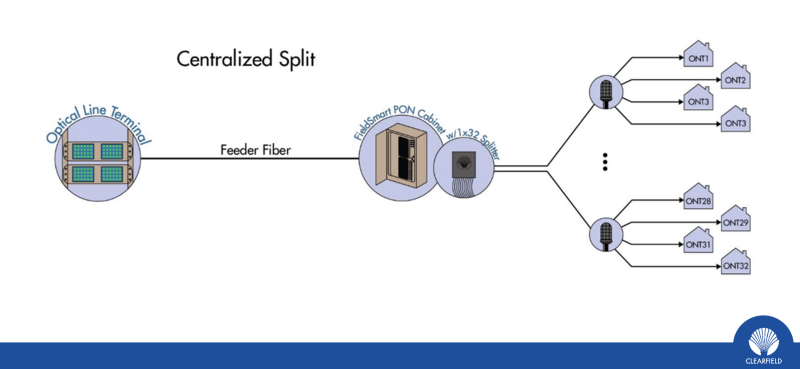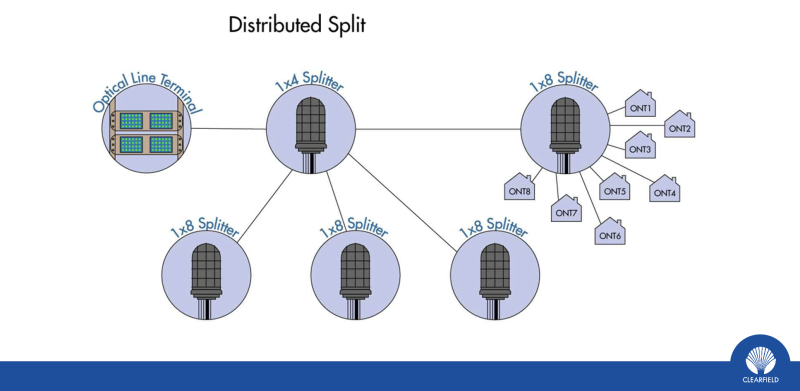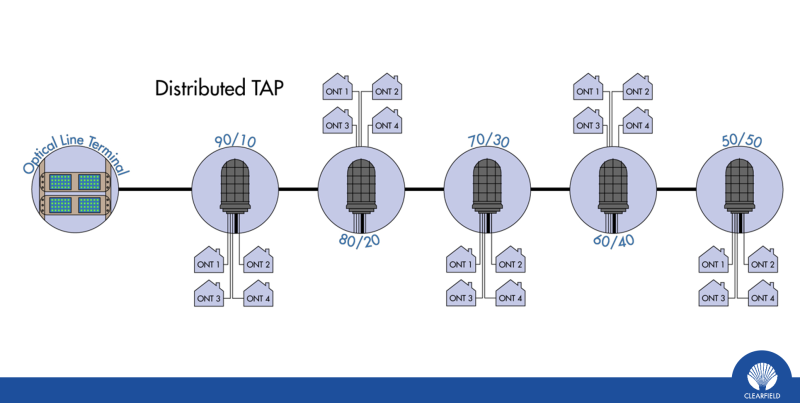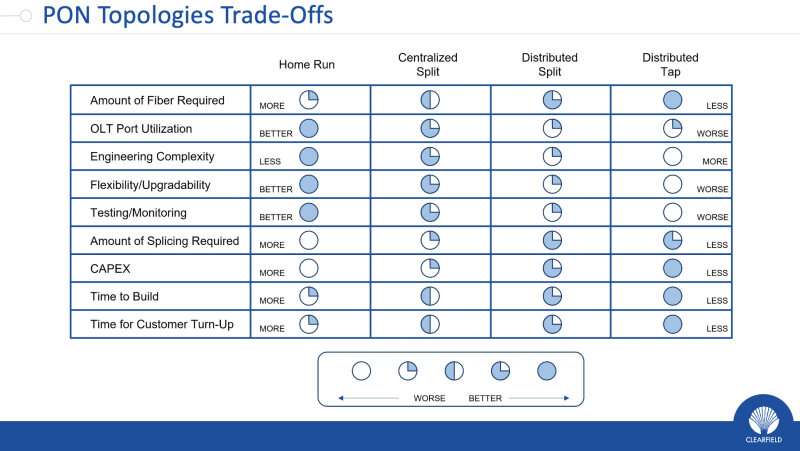DENVER — At a session today at the Mountain Connect show, a group of panelists discussed getting fiber to “everywhere” in the U.S. And many of those places will be in rural areas that have previously been unserved by any type of broadband connection, let alone fiber.
Kevin Morgan, chief marketing officer with Clearfield, explained that from a technology perspective, there are at least three different passive optical network (PON) topologies to deploy and split fiber.
With PON, “You’re setting a fiber with a light source and splitting that light signal typically 32 times,” said Morgan.
He said the most popular PON architecture is the centralized split where a hub cabinet is placed on a pad, pole or inside a vault and then the fibers are split within that enclosure.

Speaking with Fierce Telecom after the panel, Morgan said, “I’d say 50-60% of what’s out there is centralized spit. It’s used by the large Tier 1s because it makes it easy to dispatch and inventory things.” He said the centralized hub also makes it easy to handle maintenance issues.
A second type of fiber topology is the distributed split, which has become popular in less dense areas such as suburbs or rural communities. “Here you eliminate the cabinet, and you don’t have right of way issues,” said Morgan. Terminals must still be deployed but in a simpler, smaller form that can be mounted on a pole or put in “flower pot” underground or in a “dog house” above ground. The fibers are split four times at each terminal and split again further away, still equating to a 32 split. Morgan said the downside is that there is “a little bit less ability to troubleshoot” because the terminals are not all in one place.

Finally, a third topology is the distributed tap. “Think of that as a single fiber from the first stage to the end,” said Morgan. “This is becoming more popular for rural deployments.” But instead of splitting the fibers at a hub or at terminals, the fibers lessen gradually from the beginning of the line to the end. “It’s kind of appealing for a long run out to a rural farmhouse,” he said. The downside though is that if something goes wrong with the last customer the service provider has to troubleshoot the whole line. Also, there’s no way to extend the network further after it’s deployed.

“We only recommend using the distributed tap in certain cases,” said Morgan.
Clearfield provided a chart showing the pros and cons of the three different topologies.

Permitting issues
Each service provider that wants to deploy fiber to unserved areas will have to decide for themselves which type of topology to use. And many will probably choose the centralized split. But the members of today’s panel at Mountain Connect did indicate that permitting and right-of-way permissions are a huge obstacle. And that obstacle must be overcome by service providers that must create a PON hub with the centralized split topology.
Josh Wehe is director of operations at Jade Communications, a competitive carrier that covers six counties in southern Colorado “about the size of Massachusetts,” he said.
He said, “We have to go to six different counties with six different rules. We don’t mind playing by the rules, but we see issues where the rules are so onerous it discourages investment.”
Quinn Jordan, executive director of the Mississippi Broadband Association, said his organization is encouraging municipalities to provide some consistency. He said some communities are looking at permitting “as a revenue opportunity,” but they should look at broadband in their unserved areas as a GDP opportunity.
